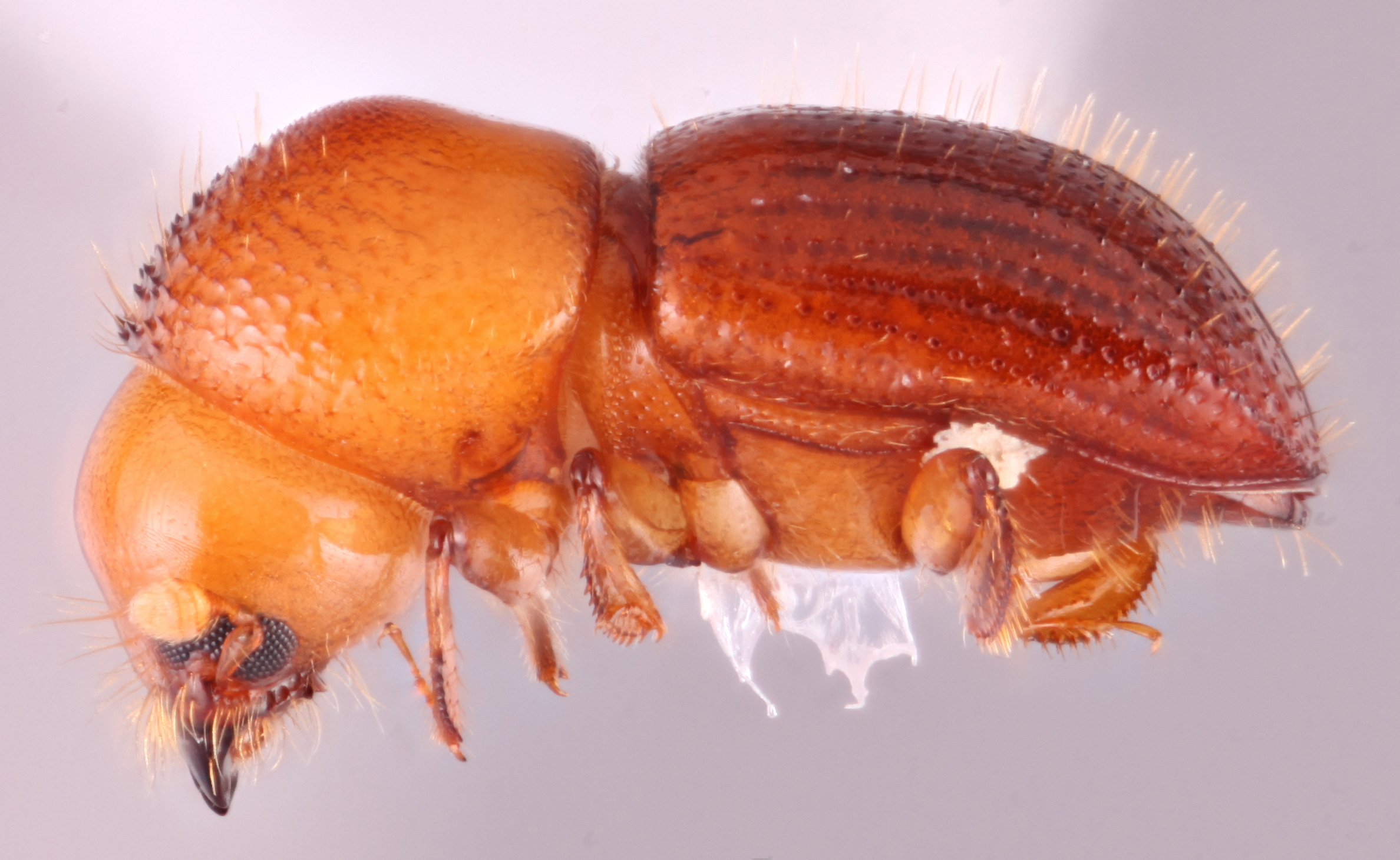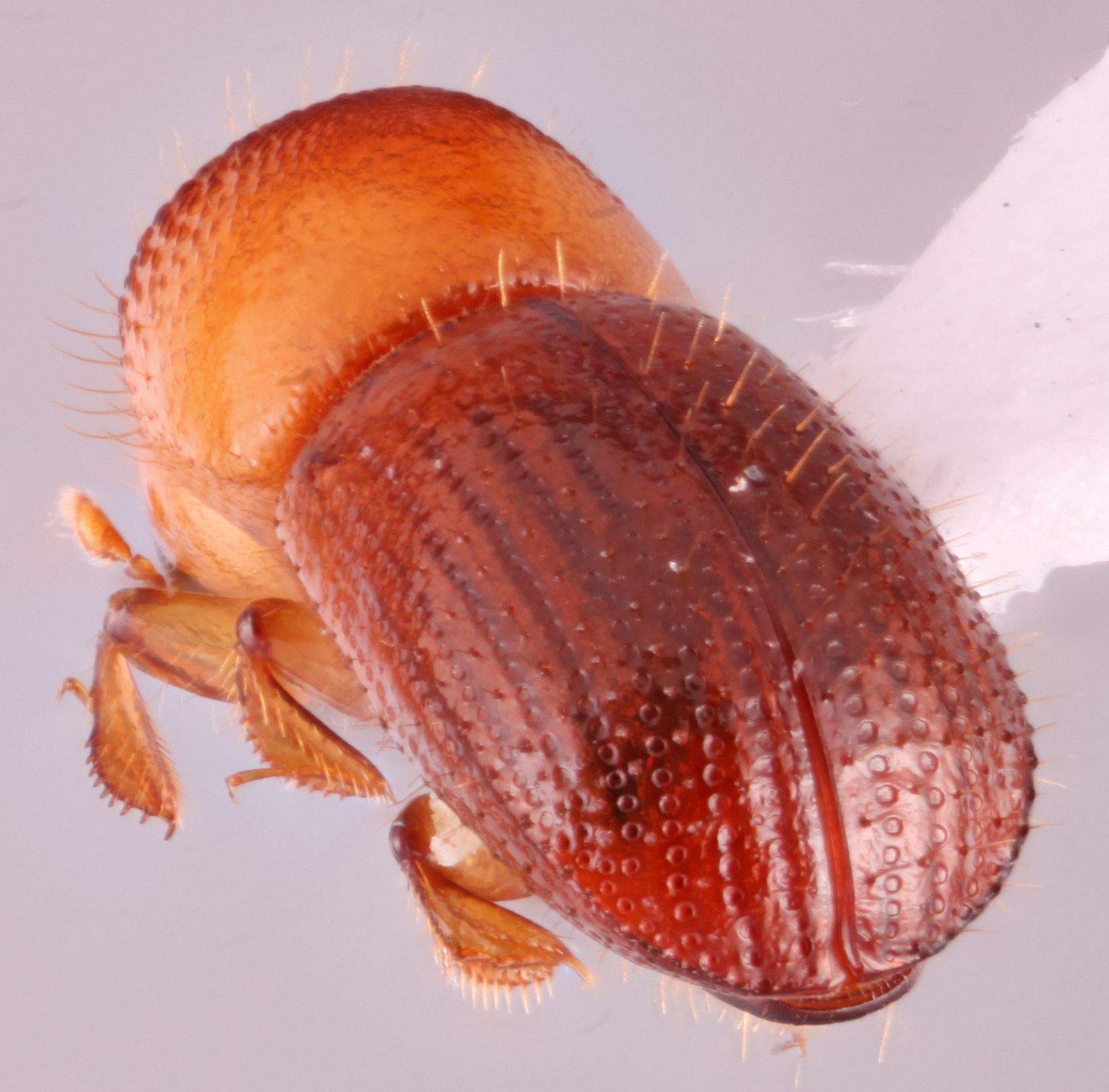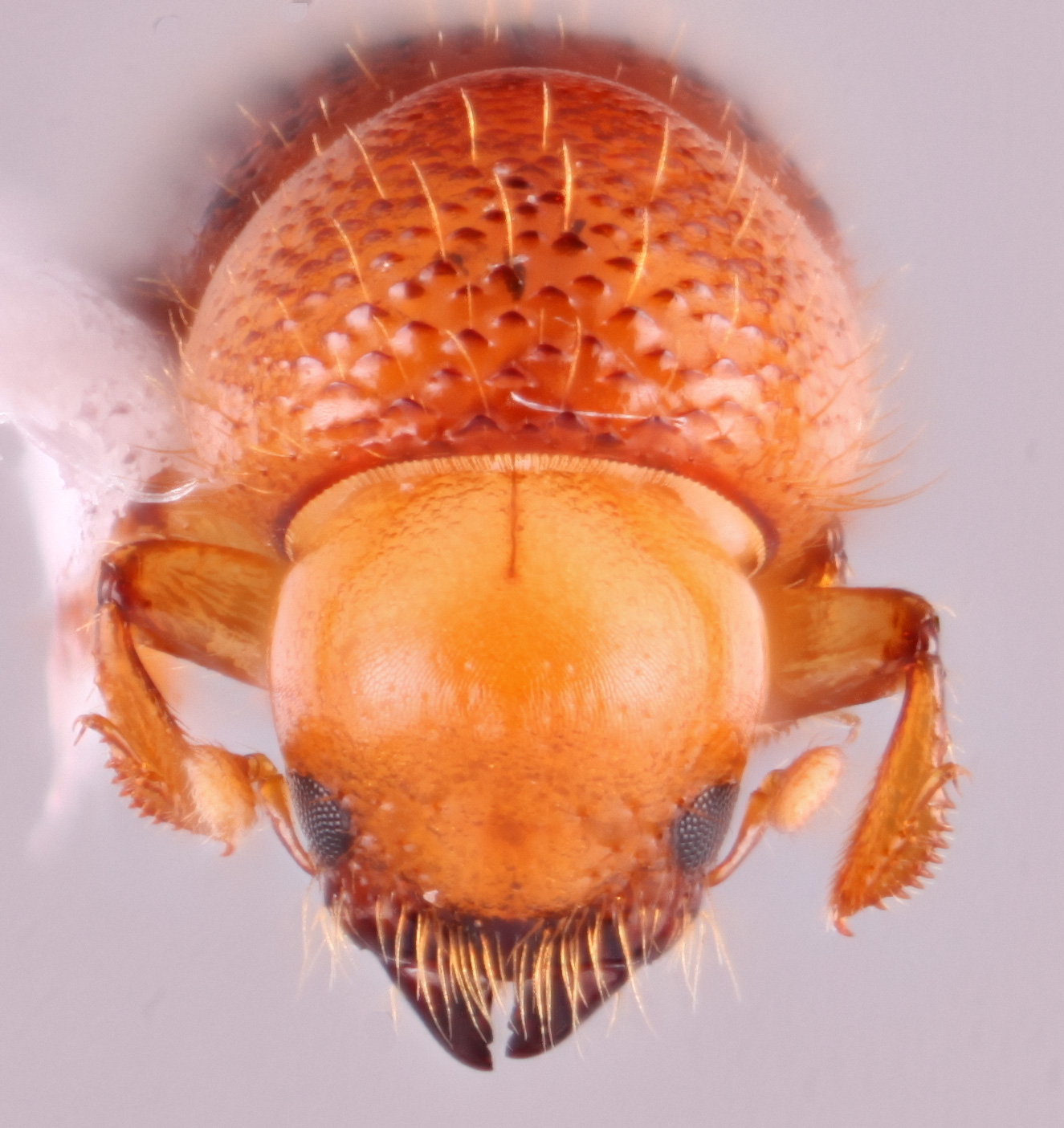Euwallacea geminus
|
Euwallacea geminus holotype lateral; S.M. Smith |
|
Euwallacea geminus holotype dorsal; S.M. Smith |
|
Euwallacea geminus holotype declivity; S.M. Smith |
|
Euwallacea geminus holotype frontal; S.M. Smith |
Taxonomic history
Euwallacea geminus Smith, Beaver & Cognato 2020 (in Smith et al. 2020bSmith et al. 2020b:
Smith SM, Beaver RA, and Cognato AI. 2020b. A monograph of the Xyleborini (Coleoptera, Curculionidae, Scolytinae) of the Indochinese Peninsula (except Malaysia) and China. ZooKeys 983: 1-442. https://doi.org/10.3897/zookeys.983.52630): 239.
Diagnosis
2.7−2.8 mm long (mean = 2.72 mm; n = 5); 2.33−2.35 times as long as wide. This species is distinguished by the pronotumpronotum:
the dorsal surface of the thorax
basic (type 2) when viewed dorsally, anterioranterior:
the front or forward; opposite of posterior margin appearing rounded; elytralelytral:
margin appearing rounded; elytralelytral:
pertaining to the elytra
bases weakly costate, granulategranulate:
pertaining to a coarse, grainy surface texture
 ; elytralelytral:
; elytralelytral:
pertaining to the elytra
declivitydeclivity:
downward slope of either the pronotum or elytra
 rounded; declivitaldeclivital:
rounded; declivitaldeclivital:
pertaining to the elytral declivity
face convexconvex:
appearing rounded ; protibiaprotibia:
; protibiaprotibia:
tibia of the first pair of legs
outer margin rounded with at least seven socketed denticlesdenticle:
a small tooth, the sides of which are equal and the tip is above the middle of the base , denticlesdenticle:
, denticlesdenticle:
a small tooth, the sides of which are equal and the tip is above the middle of the base small, their sockets small; declivitaldeclivital:
small, their sockets small; declivitaldeclivital:
pertaining to the elytral declivity
surface shiningshining:
appearing glossy or bright in luster; referring to a surface that is polished and reflects light well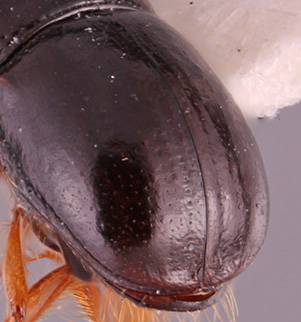 ; interstriaeinterstria:
; interstriaeinterstria:
longitudinal spaces along the elytra between the striae, which is not as<br />
impressed and bear smaller punctures.
 bearing sparse small granulesgranule:
bearing sparse small granulesgranule:
a small rounded protuberance, like grains of sand
 , posterolateralposterolateral:
, posterolateralposterolateral:
relating to end of the side part/portion
 declivitaldeclivital:
declivitaldeclivital:
pertaining to the elytral declivity
margin carinate and granulategranulate:
pertaining to a coarse, grainy surface texture
 ; and elytralelytral:
; and elytralelytral:
pertaining to the elytra
bases weakly carinate and granulategranulate:
pertaining to a coarse, grainy surface texture
 .
.
This species is identical to Euwallacea malloti and can only reliably be identified with molecular data. Without molecular data, it can be distinguished by its distribution in lowland forests (E. malloti primarily occurs in submontane forests of the Himalayas) and by the often unique coloration of the elytralelytral:
pertaining to the elytra
striae which are dark brown in mature specimens making the punctures appear very distinctive and obvious (E. malloti strial punctures not colored differently than the rest of the elytraelytron:
the two sclerotized forewings of beetles that protect and cover the flight wings
). This species is also nearly identical to the E. fornicatus species complex and can be separated by the elytralelytral:
pertaining to the elytra
bases weakly carinate and posterolateralposterolateral:
relating to end of the side part/portion
 declivitaldeclivital:
declivitaldeclivital:
pertaining to the elytral declivity
costacosta:
elevated ridge that is rounded at its crest, not necessarily with sharp appearance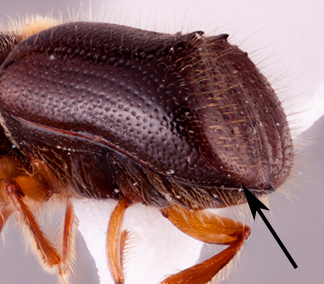 granulate.
granulate.
May be confused with
Euwallacea fornicatus species complex (E. fornicatior, E. fornicatus, E. kuroshio, E. perbrevis), E. andamanensis, E. malloti, E. semirudis, E. neptis, E. testudinatus, and E. velatus
Distribution
Vietnam
Host plants
unknown (Smith et al. 2020bSmith et al. 2020b:
Smith SM, Beaver RA, and Cognato AI. 2020b. A monograph of the Xyleborini (Coleoptera, Curculionidae, Scolytinae) of the Indochinese Peninsula (except Malaysia) and China. ZooKeys 983: 1-442. https://doi.org/10.3897/zookeys.983.52630)
DNA data
Sequences are available for COI and CAD.
COI: MN619954
CAD: MN620227

